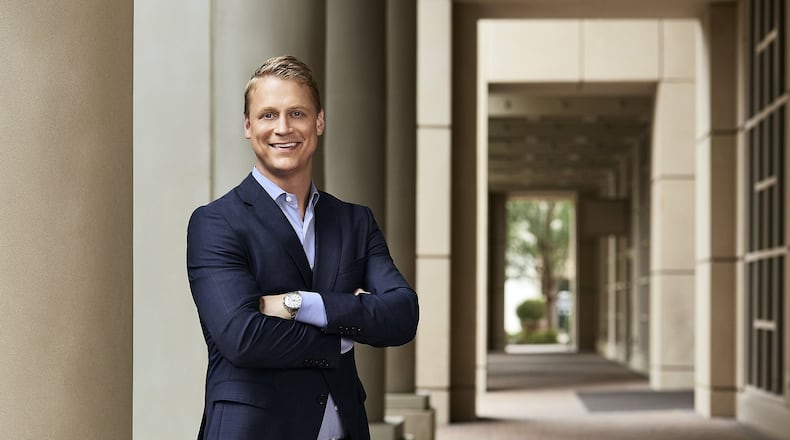The stock market’s recent slide has troubled many investors. That’s understandable. But it’s important to remember that there are prospects for growth during any downturn. Today, I want to talk about those opportunities and a related rule of thumb on owning stocks.
When the stock market tumbles, dividend yields for a wide array of companies tend to rise. That's because when stocks sell off and share prices fall, dividends (typically) remain the same, pushing a stock's dividend percentage payout higher.
Think about this example. A stock trades at $50 a share and pays a dividend of $2 per share. In this situation, your dividend yield (which, for a refresher, is the dividend divided by share price as a percentage) is 4 percent. Now, say that same stock drops to $40 a share while still kicking off the same $2 per share dividend. Now, that same stock’s dividend yield is 5 percent. So, as painful as a market sell-off can be, there can be a silver lining.
Now, for those of you wondering if you're over-invested in stocks — or, heck, whether you should own them at all in the current market — I want to talk about a guideline that you might find helpful in your decision-making.
I call it the 15/50 Stock Rule.
Compared to investment vehicles like bonds, stocks are higher risk, meaning they have more potential upside and downside. We stomach this downside risk in pursuit of higher long-term returns relative to most other asset classes.
An Antiquated Rule: Over the past 50 years, a popular rule of thumb has ingrained itself into the vernacular of investors: "Own Your Age in Bonds." Very simply, as you grow older, you increase the percentage you allocate to the safety and stability of bonds. Under this rule of thumb, the percentage of bonds in your portfolio should equal your age. This is based on the idea that as we get closer to retirement, we want to trade the growth potential and volatility of stocks for the relative safety and predictability of quality bonds.
The concept of OYAIB isn't the worst rule of thumb in the world, but if you ask me, it robs investors in their 50s and 60s of a significant amount of inflation protection. If you are in your 50s, you still have multiple decades, if not a half-century, to invest for. That's a tremendously long time horizon, and one that lends itself to a higher percentage in stocks.
My guideline, the 15/50 Stock Rule, is relatively simple to follow. If you believe you have more than 15 years left on this planet, your portfolio should consist of at least 50 percent stocks, and the remaining balance in various bonds and cash. This approach can help you strike a consistent balance between risk and reward.
And it makes sense today. As interest rates fall, bonds go up. Or at least that was the trend for 30 years — until mid-2016 when rates started to inch steadily higher from historic lows. So, we could be in for 20 or 30 years of the inverse of what we’ve seen. That means the roughly 5.15 percent annual return bonds have averaged since 1928 would be unlikely to materialize over the next decade, or until interest rates return to a more normal level.
Take a look at the information below for some historical perspective.
Average CPI* since 1928: 3.06 percent
Average S&P 500 since 1928: 11.53 percent
Average 10-Year T-Bond since 1928: 5.15 percent
* CPI is the Consumer Price Index, a popular measure of inflation in the U.S.
Remember, too, this critical point: These days, we’re living longer. It’s not uncommon for your retirement to last 30 years or more. Depending on how much you’ve saved over the decades, funding such a long stretch of life might require you to take at least a bit more risk than earlier generations of retirees. That probably means owning a higher percentage in stocks.
So, if you believe you’re an investor with a “moderate risk tolerance” (or higher), consider skipping the OYAIB approach, and look instead to the 15/50 Stock Rule — a rule of thumb I consider timelier and more effective in the world we live in today.
You don't have to take my word for it. The 50 percent stock portfolio allocation idea has been around for decades. It was most prominently championed by Benjamin Graham, the father of value investing and Warren Buffett's professor at the University of Chicago. Another fan of the 50/50 strategy is Vanguard founder John Bogle, who sees it as the ultimate all-weather allocation strategy.
Your stock allocation can be made up of either dividend-payers or growth stocks. You just need to keep an eye on your portfolio and reallocate as necessary to prevent stocks from creeping too far beyond the 50 percent mark.
Of course, a 15/50 Stock Rule portfolio requires a tad more risk tolerance than one based on OYAIB, especially if you are in your 70s. But in my opinion, this new rule makes much more sense in the current and near-future investment environment.
While it’s true that no one really knows if stocks will be worth more or less in a decade, a year or even a day, the crucial point for investors to remember is that time in the market is far better than attempting to time the market. By having a healthy mix of investments, you give yourself emotional insurance against the inherent volatility of stocks. Staying in the market over time with a diversified portfolio can help you stay the course when things get a little (or a lot) rocky.
I’ll wrap up with one of my favorite investment quotes from the famed investor Peter Lynch: “Far more money has been lost by investors preparing for corrections, or trying to anticipate corrections, than has been lost in corrections themselves.”
Wes Moss has been the host of “Money Matters” on News 95.5 and AM 750 WSB in Atlanta for more than seven years now, and he does a live show from 9-11 a.m. Sundays. He is the chief investment strategist for Atlanta-based Capital Investment Advisors. For more information, go to wesmoss.com.
DISCLOSURE
This information is provided to you as a resource for informational purposes only and should not be viewed as investment advice or recommendations. Investing involves risk, including the possible loss of principal. There is no guarantee offered that investment return, yield, or performance will be achieved. There will be periods of performance fluctuations, including periods of negative returns. Past performance is not indicative of future results when considering any investment vehicle. This information is being presented without consideration of the investment objectives, risk tolerance, or financial circumstances of any specific investor and might not be suitable for all investors. This information is not intended to, and should not, form a primary basis for any investment decision that you may make. Always consult your own legal, tax, or investment advisor before making any investment/tax/estate/financial planning considerations or decisions.
IN OTHER BUSINESS NEWS:
About the Author
Keep Reading
The Latest
Featured


